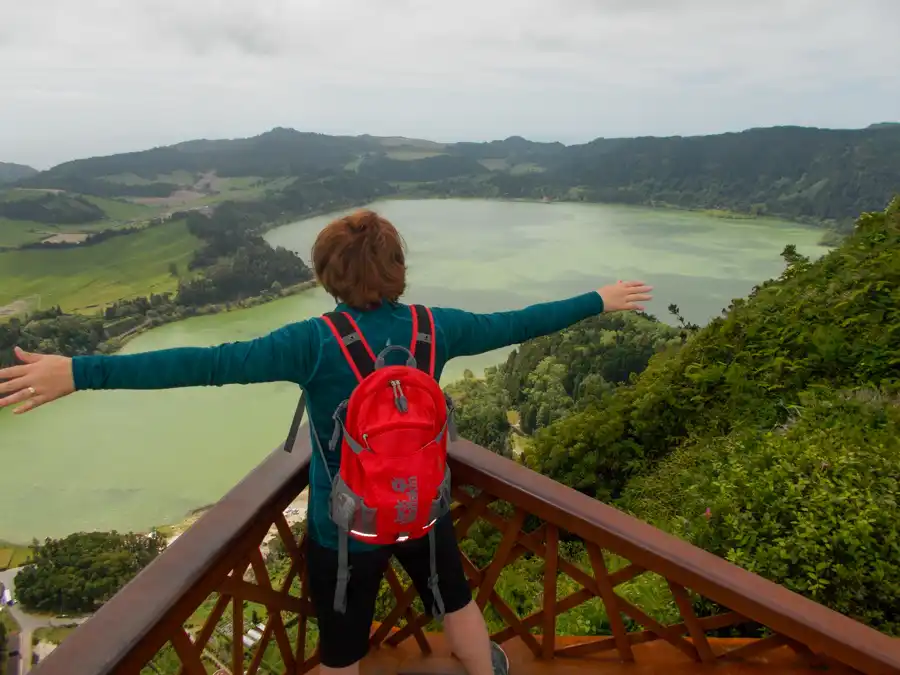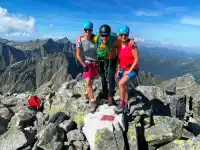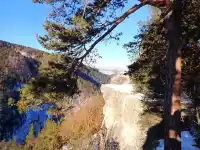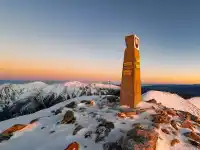For a rest day yesterday, we are as tired as horses. Today we are going to put a Lagoa das Furnas trail.
Lagoa das Furnas
It is a volcanic complex with two central flooded calderas and various bubbling mud pools, ash fields and fumaroles (vents through which hot sulphurous gases escape).
“Into the fumaroles!” Lubko thunders when he realises that he has passed the lookout point that offers the best view of the entire complex. So we have to backtrack, but the view is worth it.

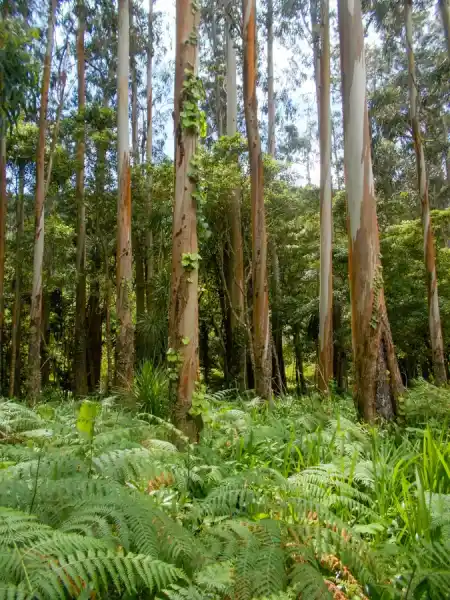
Pico do Ferro
The lookout’s name is Mirradouro “Pico do Ferro”, but you can’t buy a pico from any Ferro here. Mirradouro is Portuguese for lookout, the island is dotted with them, and they’re usually worth a stop. The viewpoints themselves are often landscaped as gardens with lovely seating and some of those views. Ajka compulsively shops for souvenirs in the car park, supporting the local economy.
Old man’s troubles
We park in the village of Furnas, and as we get out, a Portuguese oldster approaches us, smiles broadly and looks like he’s going to invite us for coffee. Instinctively, we smile broadly and look like we want to ask him for coffee. After a brief moment of embarrassed grimacing, the older man indicates that we parked at a no-stop sign.
So much for the mentality of the people in the Azores. They are incredibly friendly, polite and calm. If I had a blob of hot sulphur sewn out of the ground in my back garden, I’d be nice, polite and peaceful too. After all, who wants to die pissed off anymore? We prepare, and as we pass the older man again, I point towards the lake and ask, “Pompeii?” The older man laughs with gusto and nods.
Lagoa das Furnas trail
The hike is beautiful, we negotiate a slight elevation gain to the caldera, and then the emerald-green lake spreads out before us, surrounded by beautiful scenery. In the distance, a distinctive church rises on the shore. We decide to walk around it clockwise. For part of the trek, we go with two Americans who have come here from Massachusetts. Later, the Yankees disengage, and we continue on our own.
Where to go in the Azores
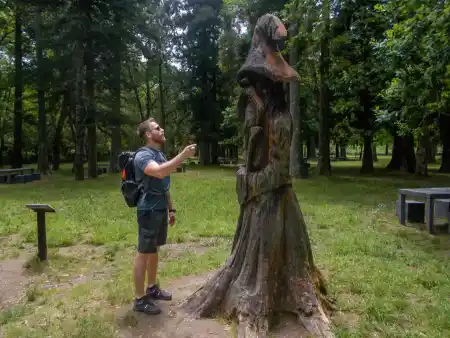
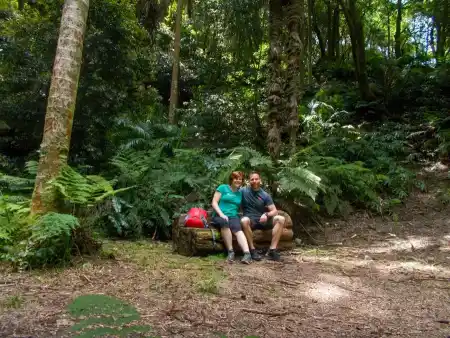
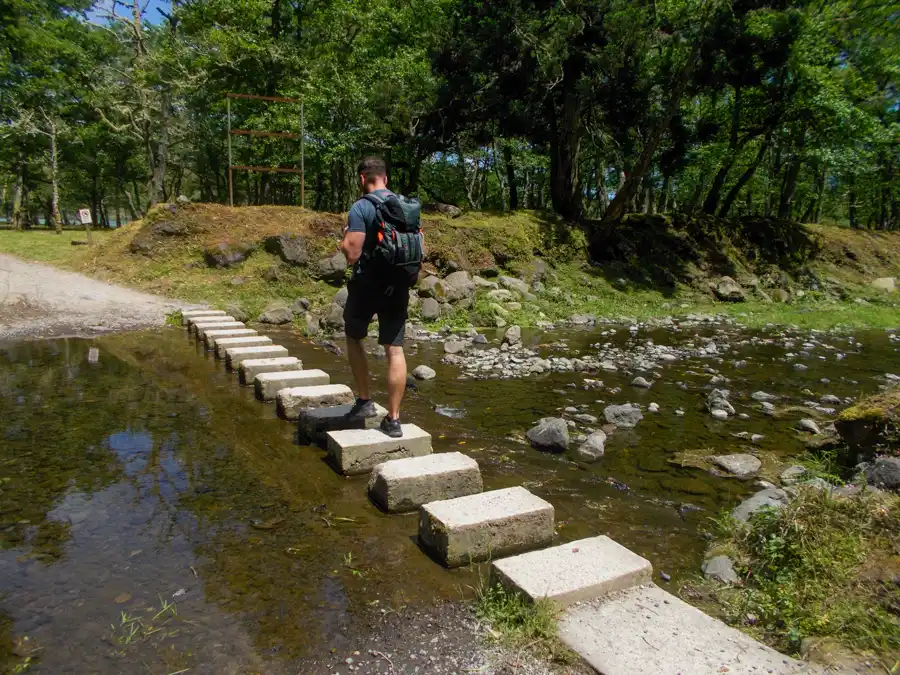
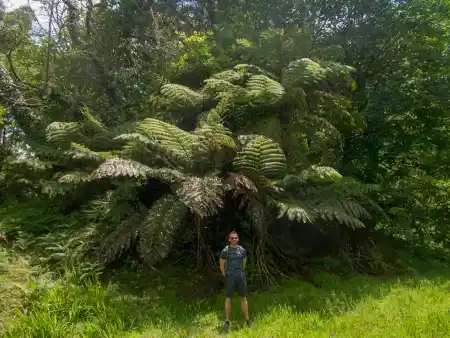
The Azores belong to the Macaronesian biographical area, including the Azores, Madeira, the Canary Islands and Cape Verde. The landscape changes, and in one minute, we are walking through an environment not dissimilar to the shores of the Golden Sands. The next, we are in the jungle. Next, we walk through a beautiful park perfect for a picnic and full of beautiful wooden statues. And the next, we are walking into a bamboo forest again.
We pass a tree with an information sign that says: “Araucaria heterophylla”, which is referred to as “Room Fir” the funny thing is that this particular specimen is 50.10 metres tall and 193 centimetres in diameter, the second largest tree of its kind in the world.
“No one told her she was roomy.” I assess as I look high into the sky at the top of the tree.
“Besides, trees don’t lend themselves to indoors because they’re too noisy,” Lubko adds, looking skyward.
“Noisy? Are trees noisy? You mean like the noise of trees?” I ask.
“Not noise. The wind makes the noise. I mean the sound they make when they grow.”
“What?” I look at Lubek uncomprehendingly.
“Because a tree makes a sound when it grows. We don’t hear it because the tree grows for a very long time. But if you planted a sapling somewhere and used a camera with a microphone to record how it grows for, say, 50 years, and then played that recording back in a sped-up few seconds, you’d hear a deafening WHOOOOOOOOOOOSH!!!”
When it’s not April 1, Fools’ Day
I stare at Lubek. This information completely blew me away. I think my eyes bulged, and my mouth dropped open. Lubko has a severe and unreadable poker player look on his face. After a moment, I notice the faintest sparkle in his eyes.
“YOU DIRTY SHIT!!!!” I’m going to start beating my beloved man senseless with my fists. He giggles dully and tries to stand in a defensive stance to withstand the avalanche of my mostly ineffective blows. A few get through, and I find that satisfying enough after a while. My anger extinguishes and passes into amusement. “Only you could come up with that kind of shit. And I’m going to believe it with your Pokerface.”
Moving on, several statues here refer to the “Furnies” monster, which is supposed to resemble a Scottish Nessie. While Nessie had at least a vague scientific explanation – a prehistoric cousin of Plesiosaurus or some other aquatic lizard whose population was preserved after the retreat of the ocean; Furnies inhabits a flooded volcanic crater and is thus 100% just a fairy-tale creature, like dragons, vampires, or Eskimos.
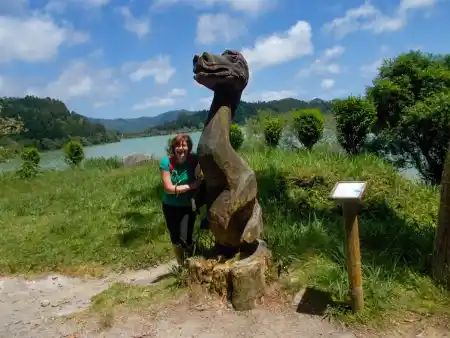
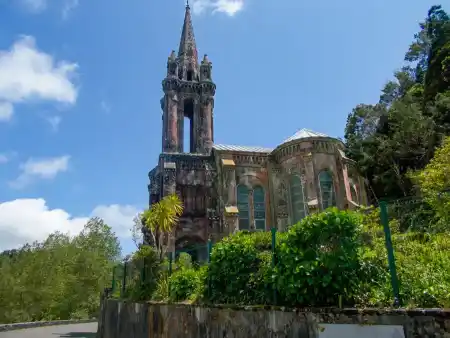
We finally arrive at the little church and learn it is called “Igreja da Nossa Senhora das Vitórias”, a chapel dedicated to the Virgin Mary. The chapel was sworn to be built by José do Canto, a prominent farmer whose wife succumbed to a fatal illness. The chapel is in neo-Gothic style, made of local basalt and tufa.
“That was you?” I ask Lubek as a sharp sulphurous smell tickles my nose.
“No, my fumarole is quite innocent in this.” She defends, practising her newly expanded vocabulary.
Cozido

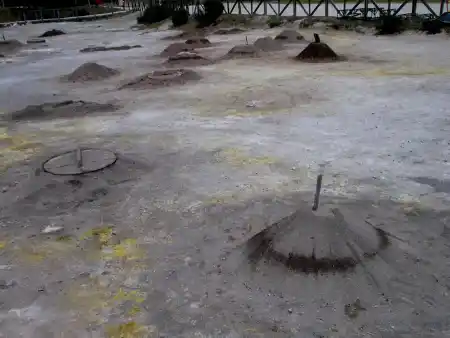
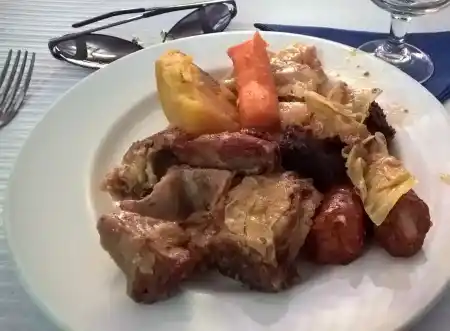
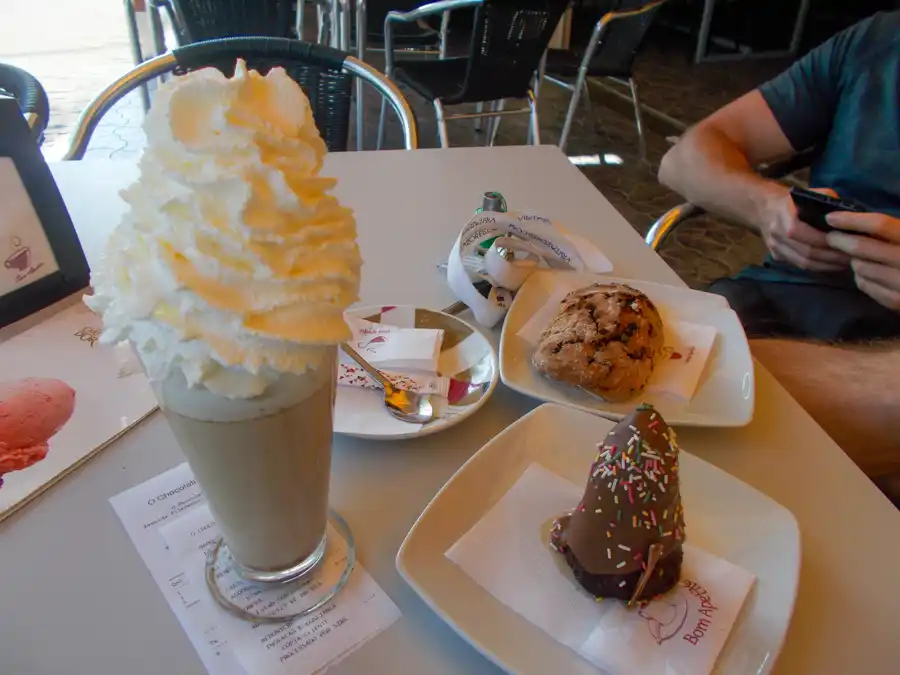
We see the source of the eggnog we’re driving through around the bend. There is smoke billowing from the black ash, bubbling water and mud. A stake with a name tag sticks out of the ground here and there.
“Is this the cemetery?” I ask.
“It’s probably where the undead have their after-death wellness.” I speculate.
This is how the locals cook here. The food is called Cozido, it’s cooked for 4-5 hours with thermal heat, and it’s such an all-in-all eintopf, it’s made with several kinds of vegetables – carrots, cabbage, potatoes, beans, rice, different parts of pork and beef, pork ribs, bacon, sausages and in general, everything that the locals have in their pantry and it ends with a guarantee.
Of course, we order Cozido at the local restaurant. You have to get to know it with your taste buds.
Tired return
Tired, we return to the campsite, looking for a mailbox on the way to send home postcards. We drop them in a small red box in a private house but have yet to find another one. The postcards eventually arrived, but we still needed to find out if it was a public mailbox or if the owner had enough choices and realized that no one had sent him 10 postcards in Slovak, and he was going to send them to the post office for us. If so, and he is reading this (stranger things have happened), then “Thank you.”
After that number with Lubek’s “VHOOOOOOOOOOUSH!!!” I play pissed off for the rest of the day. This bears fruit towards the end of the day – a giant latte with a gigantic serving of whipped cream on top, which the Portuguese call a “cappuccino” for some reason, and a cookie to go with it…
I’m spacified.
The next day we make an unplanned visit to the Poco Azul lake in Achadinha

